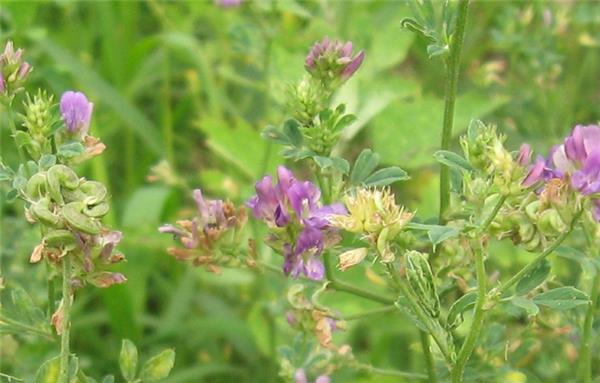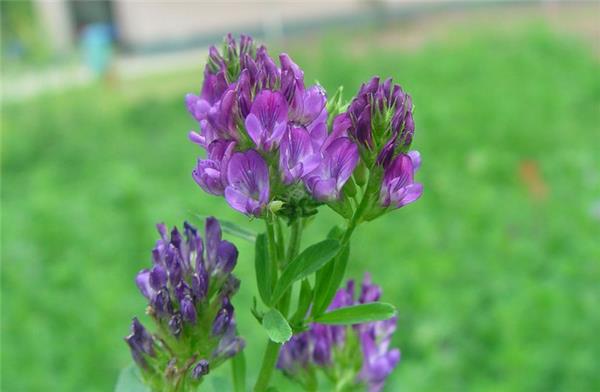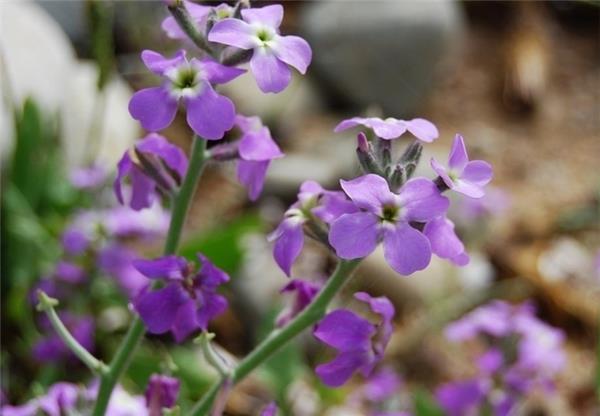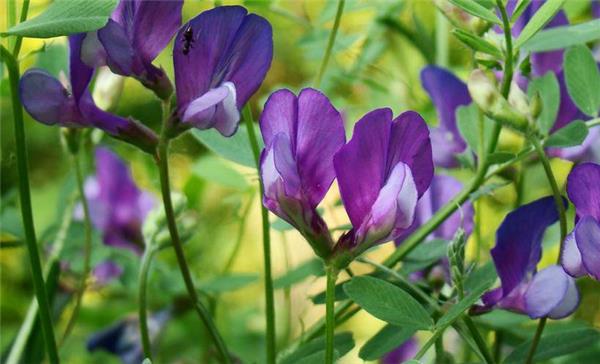[alfalfa planting technology] how to grow alfalfa
Alfalfa, Rosaceae, Leguminosae, alfalfa perennial herbs, roots stout, deep into the soil, root neck developed. Born in fields, roadsides, wilderness, grassland, river banks and valleys, etc., Eurasia and countries around the world are widely cultivated for feed and pasture. Let me tell you about the planting techniques of alfalfa.

1. Alfalfa planting technology
1. Soil and fertilization: irrigated land should be irrigated with sufficient winter water. Before sowing, shallow tillage or harrowing soil preparation should be carried out. Combined with deep tillage or shallow tillage before sowing, organic fertilizer should be applied 1500~2500 kg per mu, and calcium superphosphate should be 20~30 kg as base fertilizer. For low soil fertility, ammonium nitrate and other quick-acting nitrogen fertilizers should be applied to promote seedling growth. After each cutting, topdressing should be carried out, and 10~20 kg of calcium superphosphate or 4~6 kg of phosphorus diamine should be required per mu.
2, sowing: sowing time should be in April to August, the lowest temperature of soil above 5℃, soil moisture content is generally 18%~23% is appropriate. The seeds should be sunned for 2~3 days before sowing to break dormancy and improve germination rate and seedling uniformity. Seed field 3.75~7.5 kg/ha, grassland 11.25~15 kg/ha, arid land, hillside land or alpine areas, seeding rate increased by 20~50%.
3. Field management: after sowing and before emergence, if the soil is hardened in case of rain, the hardened layer should be removed in time to facilitate emergence. Seedling growth is very slow, vulnerable to weed harm, to intertill weeding 1~2 times. In the same year of sowing, before the end of the growing season, mowing and utilizing once, when the plant height does not reach the utilization degree, the seedlings should be kept for winter, and grazing is strictly prohibited in winter. For alfalfa fields above two years old, before sprouting in spring every year, the stubble in the field shall be cleared, and the cultivated land shall be kept for picking. After the last cutting and harvesting in autumn, topdressing shall be applied. After each mowing, it is also necessary to rake the ground and apply fertilizer. The irrigation area should be combined with irrigation and topdressing. In winter, it is necessary to irrigate enough winter water.

II. Field management of alfalfa
1. After sowing, before emergence, if the soil is hardened in case of rain, it is necessary to remove the hardened layer in time to facilitate emergence.
2, seedling growth is very slow, vulnerable to weed damage, to intertill weeding 1~2 times.
3. In the same year of sowing, before the end of the growing season, mow and utilize once. When the height of the plant does not reach the utilization level, keep the seedlings for winter. Grazing is strictly prohibited in winter.
4. For alfalfa fields above the second age, before sprouting in spring every year, clear the stubble in the field and keep the cultivated land picked. After the last cutting and harvesting in autumn, loosen the soil and apply fertilizer. After each mowing, it is also necessary to rake the ground and apply fertilizer. The irrigation area should be combined with irrigation and topdressing. In winter, it is necessary to irrigate enough winter water.
5. The cutting height of alfalfa is 3~5 cm, but the last cutting height in autumn in dry and cold areas should be 7~8 cm, so as to maintain root nutrients and facilitate snow accumulation in winter, and have a good effect on overwintering and spring germination.
6. The last cutting in autumn should be finished 20~30 days before the end of the growing season. Too late is not conducive to the accumulation of nutrients in the roots and rhizomes of plants.
7. Seed fields should be pollinated manually or by bees during flowering to improve seed setting rate.

3. Nutritional value of alfalfa
Alfalfa contains a lot of iron, so it can be used as an auxiliary food for the treatment of anemia. The B vitamins contained in alfalfa can treat pernicious anemia.
In addition, alfalfa also contains vitamin K, which has hemostatic effect. It is often used in folk medicine to treat stomach problems or hemorrhoids bleeding. Some prescriptions use it to treat stomach or hemorrhoids and intestinal bleeding.
Alfalfa also contains alfalfa and alfalfa phenol and other substances, have the role of cough and asthma, bronchitis has a certain effect.
In addition alfalfa contains crude fiber, can promote large intestine peristalsis, help stool and toxin excretion, prevention and treatment of stool secret colon and intestinal cancer.
And alfalfa contained in alfalfa can inhibit intestinal contraction, increase the content of thyroid hormone in the blood, can prevent the oxidation of adrenaline anti-cancer effect.

The above is the introduction of alfalfa planting technology, through the above content, everyone for alfalfa planting technology, need to pay attention to the problems and so on have some understanding of it, I hope the above content to explain to you.
Related
- Wuhan Hospital Iron Tree Blooming Result Was Instantly Frightened by the Gardener Master
- Which variety of camellia is the most fragrant and best? Which one do you like best?
- What is the small blue coat, the breeding methods and matters needing attention of the succulent plant
- Dormancy time and maintenance management of succulent plants during dormancy
- Minas succulent how to raise, Minas succulent plant pictures
- What are the varieties of winter succulent plants
- How to raise succulent plants in twelve rolls? let's take a look at some experience of breeding twelve rolls.
- Attention should be paid to water control for succulent plants during dormant period (winter and summer)
- Watering experience of twelve rolls of succulent plants
- Techniques for fertilizing succulent plants. An article will let you know how to fertilize succulent plants.



